Satellites

- Home
- Walking and Cycling
- Photography
- Amateur Radio - Introduction
- Slow Scan TV
- GB3TD Repeater
- Satellites
- Navtex - Marine Safety Info
- SDR - Software Defined Radio
- G2B - Special Contest Call
- Amateur Radio Contests
- QRP - Operating Notes
- Decoding FM DAB signals
- Decoding ADS-B
- Links to Useful Sites
- NOAA Weather Satellites
Easy guide to working LEO - Low Earth Orbit - FM satellites - Voice + APRS
If you would like some easy to follow ideas and links on how to get started with weather satellites, amateur LEO satellites and setting up for sending APRS text messages to the ISS; please take a look at the following:
I've had a lot of fun with decoding telemetry data from a number of different satellites.
It's pretty straightforward, thanks to well written advice and fantastic software produced by Mike Rupprecht/DK3WN and Andrey Kopanchuk/UZ7HO.
I've made a small guide on how I achieved it with a very minimal set-up:
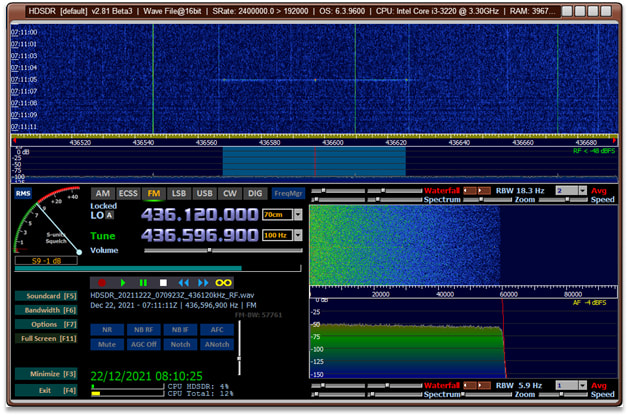
HDSDR - monitoring Bobcat 1
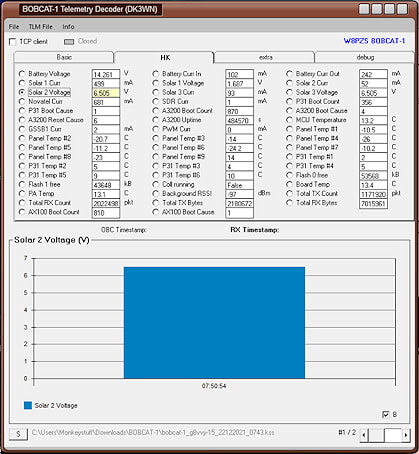
Bobcat 1 - Telemetry decode
Here, to date, are the screen shots of the decoded telemetry data that I've been able to receive from a small range of satellites.
CAS-9/XW-3/HO-113 was launched from the Taiyuan Satellite Launch Centre in China.
It carries a CW telemetry beacon, GMSK telemetry data transmission, V/U mode linear transponder for SSB and CW, a visible light band space camera and an experimental thermoelectric generator for high school students.
It took several attempts to obtain a strong enough signal for decodable data; an 84 degree pass finally produced the necessary results. 😊
The decoded data I received was as follows:
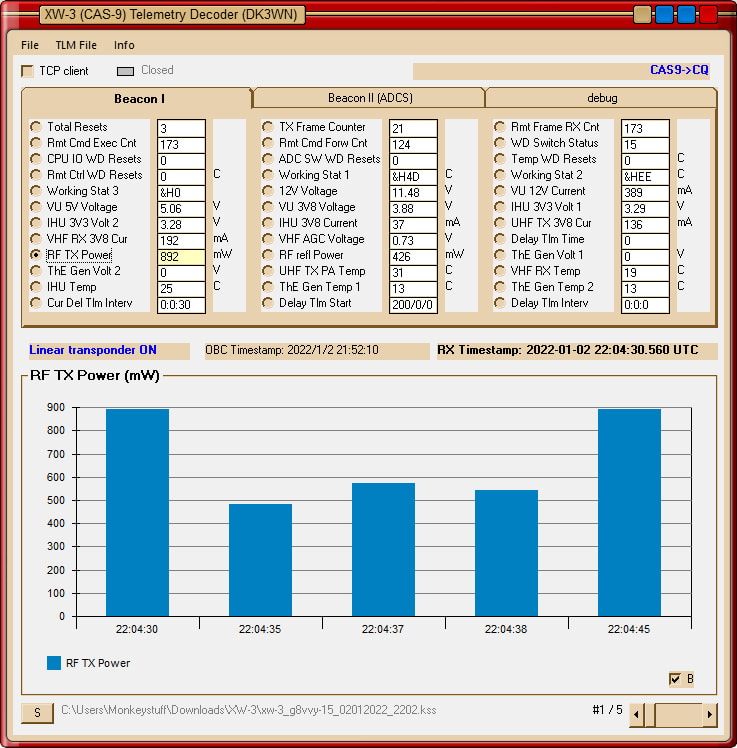
XW-3/CAS-9 Satellite telemetry
The Bobcat-1 satellite was developed at the Ohio University Avionics Engineering Centre and launched on October 2nd 2020 and deployed into orbit from the ISS on November 5, 2020.
It is a 3U cubesat deployed to study Global Navigation Satellite Systems (GNSS). As implied, the global network includes Europe’s Galileo, the USA’s NAVSTAR GPS system, Russia’s GLONASS and China’s BeiDou Navigation Satellite System. Studies will hopefully improve the availability and performance of these navigation systems for other satellites and spacecraft.
It will probably de-orbit sometime early in 2022.
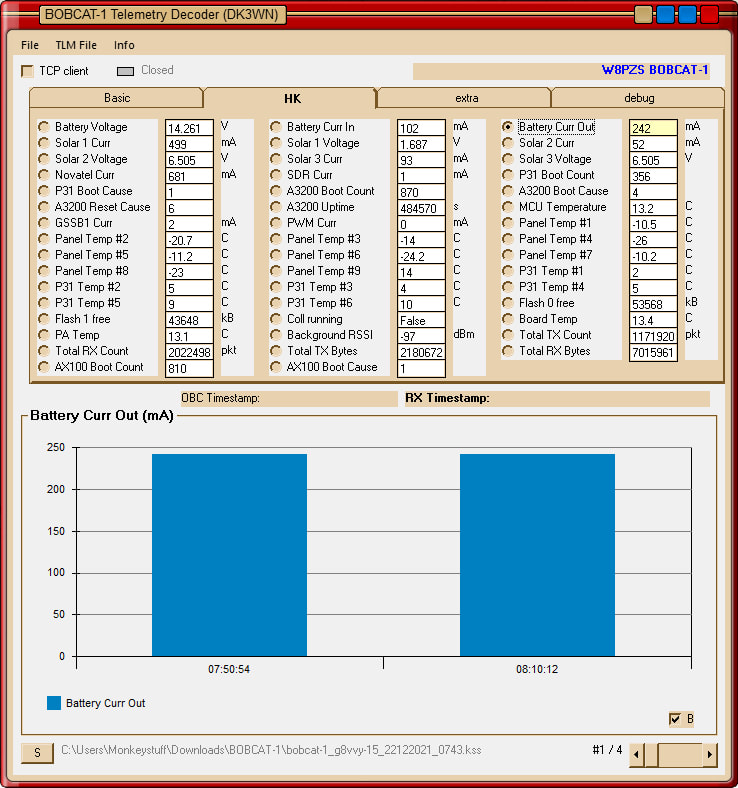
BOBCAT 1 decode
The KSU-Cubesat (King Saud University Cubesat) is a 1U cubesat which was developed by students and researchers of the College of Engineering at King Saud University, Saudi Arabia.
It was launched on March 22nd 2021 from Kazakhstan and takes photographs of the Earth, moon and space and sends the images to the College ground station.
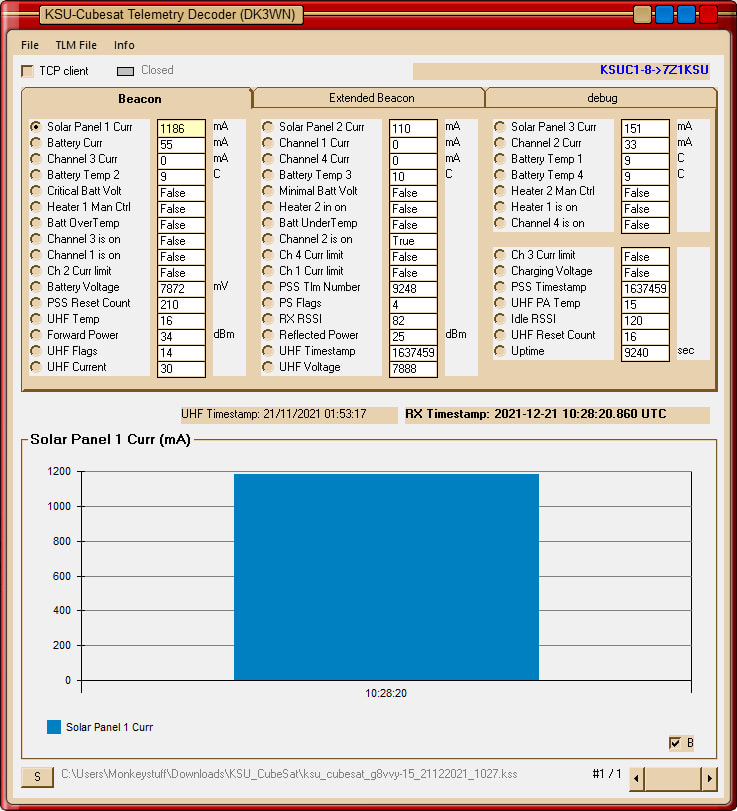
King Saud University Cubesat
JAISAT-1 (Joint Academy for Intelligent Satellites for Amateur Radio of Thailand) - a 3U cubesat - was launched on July 5th 2019. It is Thailand's first amateur radio satellite.
The JAISAT-1 Beacon signal is on 435.700 MHz in GMSK Mobitex 4800 bps and it carries an amateur radio 2m to 70 cm linear transponder for SSB and CW communications.
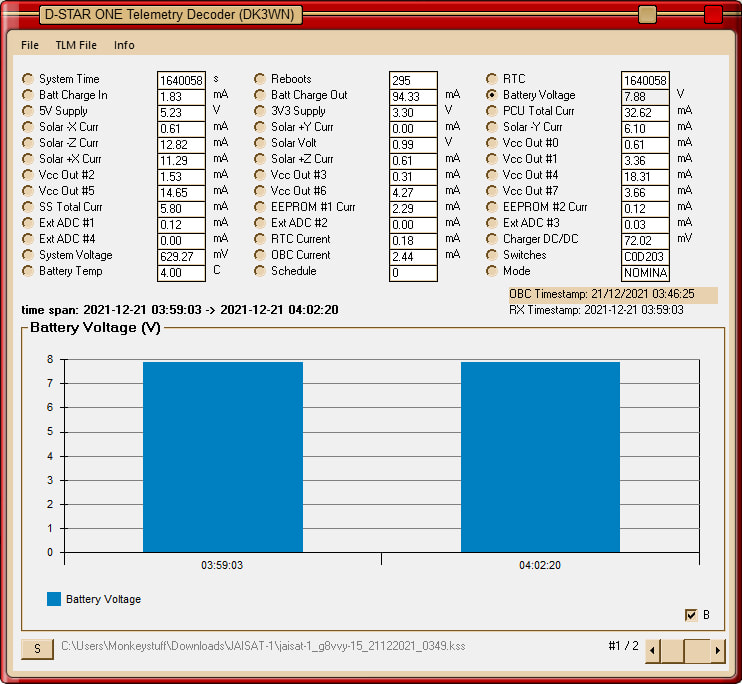
JAISAT-1 satellite telemetry
This was a project to try establish an I-gate - more specifically, a SatGate - to gate APRS packets from stations working the ISS.
I have now succesfully achieved that, and with about the most basic set-up possible!
I made a simple 120 degree dipole - cut for 145.825 MHz - and mounted it as high as possible inside my flat. It's not in the roof space, as I didn't want it to interfere with my wire dipoles, but it does give a 1.07:1 SWR and so I did hope for some positive results.
I used an RTL-SDR USB receiver, UISS and Dany/LU4EG's UISS-SatGate2 module. You additionally require a "validation number" to allow you to both send data to APRS2 servers and let it to pass through to the I-gates, including your own!
The station I-gated, (SatGated), was the 3rd packet down on the following UISS main screen screenshot.
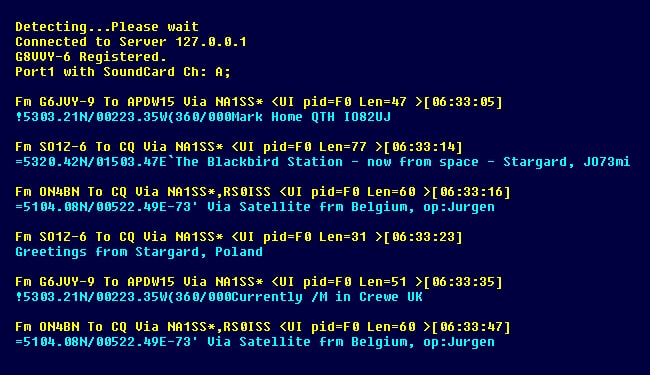
UISS screenshot
ON4BN>CQ,NA1SS*,RS0ISS,qAR,G8VVY-6:=5104.08N/00522.49E-73' Via Satellite frm Belgium, op:Jurgen
The 120 degree dipole should give positive results for high passes.
SatGate update - from Nov 2020
After some additional tweaking and, most recently, using my mobile phone as a hotspot and hoping to benefit from a faster upload link; I have managed to get another ISS packet I-gated/SatGated successfully.
Unfortunately, the bulk of the packets are seen as duplicates and although I can see inherently why they are ... although I've asked questions in a number of places, so far I am not sure as to how I can improve the speed/reliability of the I-gating process.
Here's my second, out of many attempts, at relaying an ISS packet to the Internet. This particular pass elicited 12 successfully received and I-gated packets of which 11 were discarded.
I think location and compromised antenna conditions mean that this is not quite ready to be set-up on a permanent basis. 😖